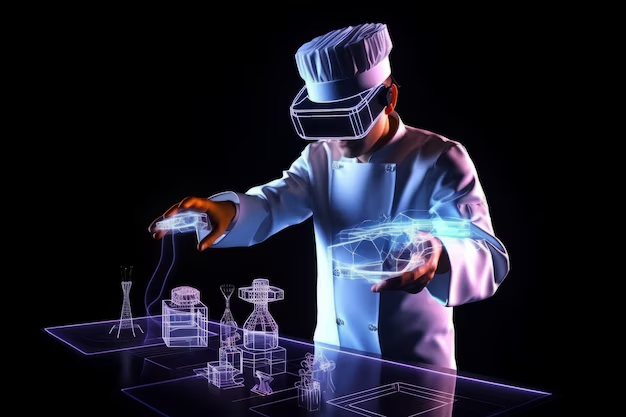Introduction
In the rapidly advancing world of technology, innovation is key to unlocking new possibilities and driving change across various industries. Among the most exciting areas of development is micro technology. This subset of technology, focused on extremely small-scale devices, systems, and components, is reshaping fields like medicine, manufacturing, electronics, and even environmental sustainability. In this article, we will explore the groundbreaking advancements in innovative micro technology, its applications, and its potential to influence the future of multiple sectors.
1. The Rise of Micro Technology: A New Era of Innovation
The inception of micro technology can be traced back to the rise of miniaturization in the latter half of the 20th century. As the demand for smaller, faster, and more efficient devices grew, engineers and scientists began developing solutions that could harness the power of incredibly tiny systems. Micro technology refers to the design, development, and use of devices and systems on the micrometer scale—often at or below the size of a human hair. This scale allows for the creation of components such as microchips, sensors, and medical devices that are not only more powerful but also incredibly compact. Over the years, micro technology has evolved, giving birth to a new wave of innovation that continues to transform industries.
2. Applications of Micro Technology Across Industries
One of the most compelling aspects of micro technology is its ability to be applied across a wide range of industries. In the medical field, for instance, micro technology has enabled the development of micro-surgical tools, wearable health monitors, and even implantable devices like pacemakers that can continuously monitor and regulate a patient’s health. These advancements are improving the precision and effectiveness of treatments while minimizing the invasiveness of procedures.
In the field of electronics, micro technology has led to the miniaturization of components like sensors, actuators, and power sources, driving the creation of smarter smartphones, advanced robotics, and wearable devices. By making devices smaller and more efficient, micro technology also contributes to sustainability by reducing waste and energy consumption.
Additionally, the manufacturing sector benefits from the precision and scalability offered by micro technology. It is particularly useful in the development of high-precision parts and systems, such as those used in aerospace, automotive, and semiconductor industries.
3. Micro Sensors: The Backbone of Smart Technology
Micro sensors are arguably one of the most transformative developments in the realm of micro technology. These tiny sensors are capable of measuring various environmental factors such as temperature, humidity, pressure, and even biological markers in the body. In smart homes and buildings, micro sensors can optimize energy consumption by adjusting lighting and temperature based on occupancy and environmental conditions.
The use of micro sensors in healthcare has revolutionized how diseases are diagnosed and monitored. For example, tiny sensors embedded in medical devices can continuously monitor a patient’s vital signs, providing real-time data to healthcare providers and alerting them to potential issues before they become critical. This capability allows for more proactive and personalized care, improving health outcomes and patient satisfaction.

In the industrial realm, micro sensors are integral to predictive maintenance, where they monitor the performance of machinery and alert operators to potential failures before they happen. This can significantly reduce downtime and prevent costly repairs, ultimately enhancing productivity and cost-efficiency.
4. Nanotechnology vs. Microtechnology: Understanding the Differences
While both nanotechnology and microtechnology are concerned with working at extremely small scales, they differ in their approach and scope. Microtechnology typically deals with devices and systems ranging from one to a few micrometers in size, whereas nanotechnology works on a much smaller scale, at the level of individual atoms and molecules.
The main difference between the two lies in their capabilities. Nanotechnology allows for the manipulation of materials at an atomic or molecular level, which opens up the possibility of creating new materials with unprecedented properties. These materials can be utilized in a wide array of fields, including electronics, drug delivery, and energy storage.
Microtechnology, on the other hand, focuses on creating practical devices and systems that operate on a microscopic scale but do not necessarily involve manipulation at the atomic level. Both fields have their unique advantages and applications, and often they work hand-in-hand to create groundbreaking innovations.
5. Challenges and Limitations of Micro Technology
While micro technology has brought about tremendous advancements, it is not without its challenges. One of the primary limitations is the difficulty in manufacturing components at such a small scale. The precision required to produce micro devices consistently is incredibly high, and the cost of research and development can be prohibitively expensive.
Another challenge is the potential for scalability. While micro technology can be applied in small quantities or specialized applications, mass production of certain micro devices or systems may still pose significant obstacles. Ensuring that these devices are durable and functional over time is another area where further innovation is required.
Furthermore, the small size of micro devices can sometimes limit their capacity and efficiency. For example, tiny batteries may be insufficient to power larger, more complex systems. Overcoming these limitations requires continuous innovation in materials science, energy storage solutions, and manufacturing techniques.
6. The Future of Micro Technology: Trends and Predictions
Looking ahead, the future of micro technology appears incredibly promising. As advances in fields like artificial intelligence, quantum computing, and material science continue, micro devices will only become more sophisticated. For instance, the integration of micro sensors with AI could lead to the creation of highly intelligent systems capable of making decisions based on real-time data without human intervention.
The growing demand for wearable technology and IoT devices will continue to drive innovation in micro technology. From smart glasses to fitness trackers and health-monitoring devices, micro technology will enable even more seamless integration between digital and physical worlds. Additionally, the role of micro technology in space exploration and the development of miniaturized satellites will likely play a key part in the next wave of exploration beyond Earth.

Sustainability is also becoming a critical consideration for future micro technology. Innovations in energy harvesting and self-powering devices will reduce reliance on external power sources, further supporting the shift towards a more sustainable and eco-friendly technological ecosystem.
7. Conclusion: Paving the Way for a Micro-Enabled Future
innovative micro technology has already proven to be a game-changer, with its applications transforming industries ranging from healthcare to manufacturing, electronics, and beyond. As advancements continue to emerge, we can expect even greater levels of miniaturization, efficiency, and functionality in the technologies we use every day. Despite the challenges that remain, such as manufacturing precision and scalability, the potential for micro technology to impact the future is vast. As research and development in this field advance, micro technology will continue to shape a smarter, more sustainable, and highly connected world.
FAQs:
1. What is the difference between micro technology and nanotechnology? Micro technology typically deals with devices at the micrometer scale (1-100 micrometers), while nanotechnology involves the manipulation of materials at the nanoscale (1-100 nanometers). Nanotechnology operates at an atomic or molecular level, whereas micro technology focuses on the development of devices at a slightly larger scale.
2. How does micro technology impact healthcare? Micro technology is revolutionizing healthcare by enabling the development of tiny, highly effective medical devices such as wearable health monitors, implantable sensors, and micro-surgical tools. These devices provide more accurate diagnoses, better monitoring of patients, and less invasive procedures.
3. What are the challenges of micro technology? Some of the main challenges of micro technology include high production costs, manufacturing precision, scalability issues, and limitations in device capacity. Overcoming these challenges requires ongoing research and innovation in materials, production methods, and design.
4. What role does micro technology play in the Internet of Things (IoT)? Micro technology plays a critical role in IoT by providing the small sensors, processors, and communication devices that make IoT systems possible. These tiny components enable everyday objects to connect and exchange data, making the IoT ecosystem smarter and more efficient.
5. Will micro technology be used in space exploration? Yes, micro technology is already being used in space exploration. Miniaturized devices such as satellites, sensors, and scientific instruments are essential for studying outer space in a cost-effective and efficient manner. As technology advances, we can expect even more sophisticated micro devices to be deployed in space missions.

